[Full/Dense] Goo's Way To Invoker (6.85 Therapy)
TheGooGaming
October 31, 2015
Preface
Goddammit, I've been busy. It's been a while...
Anyway, bear with me. Here we go, sit a while and listen:
6.85 came out and it was a fairly mild patch in my opinion, nerfing what had to be nerfed, no huge changes for the most part (except bloody
 Undying
Undying  Aghanim's Scepter
Aghanim's Scepter damn), small buffs to unpicked heroes and such, one of them
 Invoker
Invoker.
So I saw it and at first I didn't really care. Back around Ti3 I used to play a bunch of
 Invoker
Invoker but never spammed him or anything; this was back when
 Cold Snap
Cold Snap 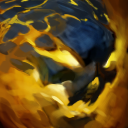 Forge Spirit
Forge Spirit combo was the most OP thing ever. I had some memories of playing this hero, so all in all and with the nerfs to the disgusting mids of last patch he became much more playable.
So I picked him 48 times in a row just to be sure.

And it seriously was like crack cocaine.
1. Introduction
 Invoker is an intelligence core-kinda hero. As you may know, intelligence cores split in two categories: Right click (like
Invoker is an intelligence core-kinda hero. As you may know, intelligence cores split in two categories: Right click (like  Windranger, or
Windranger, or  Storm Spirit), and spells (like
Storm Spirit), and spells (like  Leshrac,
Leshrac,  Tinker, maybe even
Tinker, maybe even  Lina).
Lina).
 Invoker is both. But getting the full potential out of it is very tricky.
Invoker is both. But getting the full potential out of it is very tricky.
As a hero that's well known for being difficult to play (for starters and such) just for the spell/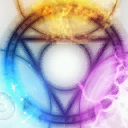 Invoke system, the toughest part of playing
Invoke system, the toughest part of playing  Invoker is figuring out what to do and what to build. Because of this phenomenon you will encounter two types of
Invoker is figuring out what to do and what to build. Because of this phenomenon you will encounter two types of  Invoker players: Players that rush
Invoker players: Players that rush  Hand of Midas every game, and me.
Hand of Midas every game, and me.
As you can see and expect, I really trash  Hand of Midas and stuff like
Hand of Midas and stuff like  Phase Boots in this guide.
Phase Boots in this guide. And before you jump into argument I'll explain why:
*
 Invoker
Invoker is a hero that lacks natural stats and movement speed, except for his new intelligence growth. In order to not die in a single stun, you need to tank up a bit, and
 Quas
Quas doesn't quite cut it until later on. You have to get
 Power Treads
Power Treads for stats, and either
 Urn of Shadows
Urn of Shadows or a
 Bracer
Bracer, or you will die instantly in fights.
*
 Hand of Midas
Hand of Midas gives you exp, sure. But you don't need more exp boosting, staying in empty lanes and farming the jungle with
 Forge Spirit
Forge Spirits and
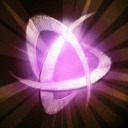 Alacrity
Alacrity will make you the exp leader the vast majority of matches.
 Hand of Midas
Hand of Midas is a really expensive item considering how early you are supposed to buy it, with that money you can get your full
 Power Treads
Power Treads and start building a second item, instead of just going midas. Also, it takes a lot of uses to pay for itself, when buying that
 Urn of Shadows
Urn of Shadows will allow you to stay in the field for prolonged periods of time and get you more farming exp and gold farming time. Also not mentioning it helps you net kills and survive yourself, pays for itself much faster.
In other words,  Hand of Midas is not cost effective on
Hand of Midas is not cost effective on  Invoker;
Invoker; it's not the same like in the case of an
 Ancient Apparition
Ancient Apparition for example.
*
 Phase Boots
Phase Boots mainly because they don't give stats, you get good damage from
 Exort
Exort and
 Alacrity
Alacrity and you tend to cancel the phase effect a lot with spells.
 Phase Boots
Phase Boots are much better on a QW
 Invoker
Invoker, but that's not how I play, and that's not what this particular guide is about.
*
In other words, and to be clear: Midas is not a bad item, but the it's not core on the hero and building it without looking at the situation will be detrimental to your play.
With that said:
This guide goes into everything,
or at least I tried to, so there are some basic stuff about the hero for players that don't know how
 Invoker
Invoker works completely, and there is some really complex stuff near the end, so...
If you are an aspiring  Invoker player,
Invoker player, then some parts may be a little overwhelming, and
if you are an experienced player, then some parts may be a little obvious or boring for you.
Use the index and read whatever you need, don't read the whole thing if you don't need to, it is a fairly lengthy guide. I won't get mad.
Shall we proceed?
2. Quas, Wex, Exort, & How Invoker Works
For this to be a complete guide I have to first go into the basics, and the mechanics that  Invoker plays with. So...
Invoker plays with. So...
This is how  Invoker's spells look compared to other heroes:
Invoker's spells look compared to other heroes:

The red square is where  Invoked spells go, I'll go into that in a a second.
Invoked spells go, I'll go into that in a a second.
So: apart from
 Invoke
Invoke and all of the invoked spells we have the orbs,
 Quas
Quas,
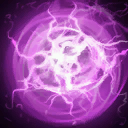 Wex
Wex and
 Exort
Exort.
These orbs do three things:
* They are passive effects.
* They are buffs.
* They are used with
 Invoke
Invoke.
I'll explain each briefly, except the last one.
Also, keep in mind these three orb spells do not have any cooldown, cast time, backswing, mana cost, etc.
You can move them completely freely. They will interrupt your channels though.
Passive Effect:
As you may or may not know,
 Invoker
Invoker cannot get points in stats (he has 7 points in each orb and 4 in
 Invoke
Invoke, making 25). But
 Invoker
Invoker's stats come from the passive effect from each orb.
 Invoker gains 2 points of the invididual stats, just by having points in
Invoker gains 2 points of the invididual stats, just by having points in  Quas,
Quas,  Wex or
Wex or  Exort.
-
Exort.
-  Quas = Strength.
-
Quas = Strength.
-  Wex = Agility.
-
Wex = Agility.
-  Exort = Intelligence.
Exort = Intelligence.
You can get up to 7 points on each of these orbs,
meaning that at all max level you are getting 14 of all atributes.
Buff effect:
Apart from the passive effect of just having points in the spells,
you gain extra passive effects when you have the orbs active.
For simplicity sake, I will be refering to the active orbs as Orb instances.
 The effects are provided per instance, so you can mix & match with the effects of having different instances.
-
The effects are provided per instance, so you can mix & match with the effects of having different instances.
-  Quas = Extra Health Regeneration.
-
Quas = Extra Health Regeneration.
-  Wex = Extra Movement Speed & Attack Speed.
-
Wex = Extra Movement Speed & Attack Speed.
-  Exort = Extra Right Click Damage.
Exort = Extra Right Click Damage.
The provided bonuses per instance increase with each level you put on them.
* At max level
 Quas
Quas provides you
7 health regen per instance.
*
 Wex
Wex provides
14 Attack speed and 7% extra movement speed, per instance.
* And
 Exort
Exort provides you 21 extra damage per instance.
That's 63 damage (!).
And lastly,  Invoke use.
Invoke use. Basically what makes
 Invoker
Invoker the special hero he is, you use your active orb instances and combine them with your ultimate,
 Invoke
Invoke.
Depending on your configuration of instances, you will  Invoke a spell to your spell set.
Invoke a spell to your spell set.

There are 10 total spells you can  Invoke.
Invoke. I will be covering these in the following sections.
I'll just explain how  Invoke works here:
Invoke works here:
When you press
 Invoke
Invoke, it looks at what instances you have active and gives you a spell accordingly. For example here: having one instance of each orb,
 Quas
Quas,
 Wex
Wex and
 Exort
Exort, will
 Invoke
Invoke you
 Deafening Blast
Deafening Blast.
The order does not matter. If you have one of each it will always invoke  Deafening Blast no matter the configuration.
Deafening Blast no matter the configuration.
The newly
 Invoke
Invoked spell always goes into the first slot, as you can see here.

Now, if you  Invoke something else, the
Invoke something else, the  Deafening Blast is moved from the first slot to the second.
Deafening Blast is moved from the first slot to the second. For example here invoking
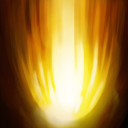 Sun Strike
Sun Strike:

Invoking the spell currently in the second slot will send it to the first one. And so, the first one to the second slot.
Doing this will not put  Invoke on cooldown, it will consume mana though.
Invoke on cooldown, it will consume mana though.

You can use this to
 Invoke
Invoke a spell you want to use once, like
 Sun Strike
Sun Strike or
 Forge Spirit
Forge Spirits for farming, then bring the spell you had in the first slot back, then
 Invoke
Invoke something else and get rid of that temporal spell.

If you  Invoke the spell that is already in your first slot, nothing happens
Invoke the spell that is already in your first slot, nothing happens: mana is consumed and
 Invoker
Invoker insults you.
 Invoke
Invoke is not put on cooldown.
I will explain more on this in the combo section, but that actually includes combat and playing around spell cooldowns and stuff.
Let's look at the invoked spells:
2.1.1. Sadron's Protracted Frisson (Cold Snap)
First off:  Cold Snap is invoked with three instances of
Cold Snap is invoked with three instances of  Quas.
Quas.
 Cold Snap
Cold Snap: On cast you place a debuff on an enemy, the debuff consists of procs. Each proc deals damage and stuns the affected enemy. A first proc happens at the moment of cast and then every time the affected enemy takes damage from any source. There is a cooldown between procs.
The proc stuns are always 0.4 seconds.
All of  Cold Snap's parts scale with your
Cold Snap's parts scale with your  Quas level:
* Damage per proc:
Quas level:
* Damage per proc: 7/14/21/28/35/42/49
* Debuff duration: 3/3.5/4/4.5/5/5.5/6
* Cooldown between procs: 0.77/0.74/0.71/0.69/0.66/0.63/0.60
Cooldown: 20
Mana cost: 100
At max  Quas level,
Quas level,  Cold Snap can proc up to 10 times, dealing a total 490 damage.
Cold Snap can proc up to 10 times, dealing a total 490 damage.
 Cold Snap
Cold Snap is one of the spells you will be using the most during the early game, it is your strongest killing spell along with
 Sun Strike
Sun Strike, at least when talking single target/ganks/etc.
Since  Cold Snap works with procs, it's best if you have a way of assuring the procs will happen.
Cold Snap works with procs, it's best if you have a way of assuring the procs will happen. This can be done with having multiple things attacking the affected enemy, having any sort of damage over time spell applied to them, etc.
 Invoker
Invoker's kill potential is very limited until you have mobility items/euls, but spells like
 Cold Snap
Cold Snap can be quite powerful on their own:
*
If the opposing enemy harasses you past the creepwave and draws creep aggro,  Cold Snap will punish it hard
Cold Snap will punish it hard, with all the creep attacking them you will have procs guaranteed.
*
In early fights, casting  Cold Snap on their initiator/frontliner hero and have your team click them down will kill them most of the time.
Cold Snap on their initiator/frontliner hero and have your team click them down will kill them most of the time. It is best to use when enemies come to you and not the other way around, a
 Cold Snap
Cold Snapped enemy will try to kite
 Invoker
Invoker to avoid all the procs as possible.
*
When one of your supports ganks mid, have  Cold Snap ready, even a 1 hero difference can make
Cold Snap ready, even a 1 hero difference can make  Cold Snap much stronger in it's kill potential.
Cold Snap much stronger in it's kill potential.
*
 Cold Snap synergizes with
Cold Snap synergizes with 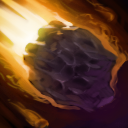 Chaos Meteor, because of it's damage over time.
Chaos Meteor, because of it's damage over time. It also synergizes with
 Forge Spirit
Forge Spirit, having more units click at the affected enemy in order to cause procs.
 Cold Snap is also the reason some pickups like
Cold Snap is also the reason some pickups like  Urn of Shadows and
Urn of Shadows and  Necronomicon become really strong at killing heroes.
Necronomicon become really strong at killing heroes.
Some little things to keep in mind:
*
 Cold Snap
Cold Snap is completely blocked with any form of magic immunity.
*
 Cold Snap
Cold Snap is blocked by
 Linken's Sphere
Linken's Sphere, and you should watch out for
 Lotus Orb
Lotus Orb too, it's a nasty spell if well placed.
*
 Cold Snap
Cold Snap's proc damage is magical.
*  Cold Snap cannot be purged off or dispelled.
Cold Snap cannot be purged off or dispelled.
*
 Cold Snap
Cold Snap has strong utility in the laning stage, as it can mini-stun an opponent multiple times, especially if they have drawn creep aggro by ordering an attack on you. Use it on an aggressive enemy, and it can proc multiple times from your attacks as well as those of allied creeps.
* Remember that this spell mini-stuns its target upon cast, and has 1000 cast range. This allows
 Invoker
Invoker to use the spell to interrupt channeled spells and items from a great distance, particularly useful for interrupting
 Town Portal Scroll
Town Portal Scrolls.
*
 Cold Snap
Cold Snap is very strong when combined with any spell that deals damage over time, as each small damage instance procs the mini-stun and damage. Used in combination with a damage-over-time spell,
 Cold Snap
Cold Snap can greatly hinder a target's movements and deal significant damage.
*
 Forge Spirit
Forge Spirits have strong synergy with
 Cold Snap
Cold Snap, as each spirit's individual attacks (as well as your own) can proc the mini-stun, and both spells are based on
 Quas
Quas. When attacking a target afflicted with
 Cold Snap
Cold Snap, try to stagger your
 Forge Spirit
Forge Spirits so that they attack at different intervals, in order to increase the chances of proccing the mini-stun.
* One of
 Cold Snap
Cold Snap's strongest aspects is that it can greatly impede the attack and cast animations of enemy players, preventing them from retaliating for the duration of the debuff. As
 Cold Snap
Cold Snap is leveled up the trigger cooldown decreases, meaning that at maximum level of Quas heroes with cast or attack animations above 0.2 seconds are unable to do anything without dispelling the debuff first,
if the mini-stun procs immediately when it is able to.
2.1.2. Myrault's Hinder-Gast (Ghost Walk)
 Ghost Walk is invoked with two instances of
Ghost Walk is invoked with two instances of  Quas and one instance of
Quas and one instance of  Wex.
Wex.
 Ghost Walk
Ghost Walk: On cast turns
 Invoker
Invoker invisible for a duration, modifying his movement speed and slowing enemies around him.
Some parts of  Ghost Walk's scaling are bound to
Ghost Walk's scaling are bound to  Quas and some to
Quas and some to  Wex, see the color of the text.
Wex, see the color of the text.
*
Enemy movement speed slow: 20%/25%/30%/35%/40%/45%/50%
*
Invoker's movement speed change: -30%/-20%/-10%/0%/10%/20%/30%
Duration: 100
Slow Radius: 400
Mana Cost: 200
Cooldown: 35
 Ghost Walk
Ghost Walk has no cast point or fade time. The delay is issued by the time it takes to
 Invoke
Invoke it.
 Invoker
Invoker gains phased movement for the duration of
 Ghost Walk
Ghost Walk.
 Ghost Walk
Ghost Walk's slow is an aura, and it lingers for 2 seconds.
 Ghost Walk
Ghost Walk is a spell you will be using for 2 things (at least in my build, I don't use invis based playstyles):
First off, for panic escaping, like getting jumped on and going QUASQUASWEXINVOKE*whoosh* and hoping they dont have detection and slowly walk away because you only have one point in
 Wex
Wex.
Second, for split pushing and farming solo.  Invoker
Invoker needs levels and farming a lane solo is the best way to get them. You are going to have to risk it to get this exp and going out solo and putting yourself in a bit of a danger zone. When doing this I recommend having both
 Forge Spirit
Forge Spirit and
 Ghost Walk
Ghost Walk invoked, and a TP scroll of course. You can use the
 Forge Spirit
Forge Spirits to keep pushing and start backing out with time, and in case enemies show up you can TP out and invis while tping, as
 Ghost Walk
Ghost Walk wont cancel the channeling.
* When in fights, you will be using certain combos, and some of the combos with more than 3 or 4 spells in them will leave you with
 Invoke
Invoke on cooldown, when this happens, try to remember very well which spells are on cooldown (which ones you have already used in the fight) and be sure you don't waste
 Invoke
Invoke on them,
in case the fight is turned around you will want to have  Invoke available for
Invoke available for  Ghost Walk
Ghost Walk.
* In the late-r mid game you can use
 Ghost Walk
Ghost Walk's strong AOE slow to affect enemies you combo with
 Chaos Meteor
Chaos Meteor, or to help your team catch up to the fleeing enemies. This can be very strong, but you have to keep in mind you are putting your escape mechanism on cooldown, and that it is better to have strong heroes as allies that can use that slow, as some times it's just better to do the work yourself.
Very useful for when you have already used most of your strong spells in a fight and everything is on cooldown.
* If you plan on using
 Ghost Walk
Ghost Walk to go faster, remember putting on three instances of
 Wex
Wex first, so the percentile bonus movement speed is much larger. Remember you can't change orbs once you cast invis without breaking it.
* The most general use for
 Ghost Walk
Ghost Walk is as an escape spell, as
 Invoker
Invoker can turn invisible almost immediately upon casting the spell. However, it is also wise to level up Wex at least a few times so that Invoker can walk away from the enemy in a timely manner.
* While invisible, beware that using any items or queuing any orbs causes you to break invisibility. As such, if your goal is to run away from the enemy, do not change your orbs or use your
 Power Treads
Power Treads, as doing either instantly reveals you.
* If your goal is to run away from the enemy, remember that you need at least 4 levels of
 Wex
Wex in order to negate the movement penalty. However, if you have time, it is also advised to shift all of your active orbs to
 Wex
Wex, in order to grant yourself a movement speed bonus.
*
 Ghost Walk
Ghost Walk can be used in chases as well, not just escapes, if the enemy has no escape abilities. With high levels in both
 Quas
Quas and
 Wex
Wex,
 Invoker
Invoker can catch up to fleeing enemies and then slow them down by walking alongside them, giving allies time to catch up and finish a target.
* Depending on
 Invoker
Invoker's item build,
 Ghost Walk
Ghost Walk can also be used as a roaming and ganking spell, as its extremely long duration relative to the spell's short cooldown allows
 Invoker
Invoker to remain invisible indefinitely with enough mana. With enough levels in Wex, Invoker can maintain up to a 51% movement speed bonus with
 Ghost Walk
Ghost Walk (up to 30% from the spell, and a maximum of 21% from three active
 Wex
Wex orbs), making him extremely fast and able to move around the map quickly. However, mind that getting too close to enemies will inflict them with the slow debuff, which can warn them that
 Invoker
Invoker is nearby and thus give away that a gank is incoming.
2.1.3. Killing Wall of Koryx (Ice Wall)
 Ice Wall is invoked with two instances of
Ice Wall is invoked with two instances of  Quas and one instance of
Quas and one instance of  Exort.
Exort.
 Ice Wall
Ice Wall: On cast,
 Invoker
Invoker creates a wall of ice in front of him, enemies that come in contact with the wall are slowed and take damage per second.
 Ice Wall scales using levels of
Ice Wall scales using levels of  Quas and
Quas and  Exort, look at the colors to see which one scales which part:
Exort, look at the colors to see which one scales which part:
*
Movement Speed Slow: 20%/40%/60%/80%/100%/120%/140%
*
Wall Duration: 3/4.5/6/7.5/9/10.5/12
*
Damage per second: 6/12/18/24/30/36/42
Wall length: 1330 (Length + effective radius)
Wall width: 105
Wall spawn distance: 200 (in front of
 Invoker
Invoker)
Cooldown: 25
Mana Cost: 175
 Ice Wall
Ice Wall is a spell that is usually forgotten by new
 Invoker
Invoker players because they have a hard time landing it properly, which is a shame because it's a really powerful spell.
As you can understand from the description,
 Ice Wall
Ice Wall forms in a perpendicular line in front of
 Invoker
Invoker, you can use this in many ways:
* When being chased you can cast
 Ice Wall
Ice Wall in front of you and then
 Force Staff
Force Staff past it, enemies will have to walk through it and get slowed if they want to continue chasing.
* On
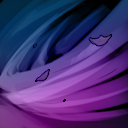 Tornado
Tornado based combos you can have
 Ice Wall
Ice Wall included and place it under the cycloned enemies in a line form, so they land on top of it and get slowed, also to be used with
 Eul's Scepter of Divinity
Eul's Scepter of Divinity.
* You can catch fleeing enemies with
 Ice Wall
Ice Wall if you turn a little bit and catch them with the far side of it (practice this), like so:

*
 Ice Wall
Ice Wall is best used as a disengagement spell, as it drastically slows chasing enemies and give teammates time to escape and its wide area prevents enemy players from easily getting around it to avoid the slow. It can also be used against solo enemies attempting to escape, as it can lock them down in position for casting your other spells.
*
 Invoker
Invoker requires good positioning in order to use this spell offensively, as the wall is placed right in front of him upon casting the spell. As such, it is recommended to get a
 Blink Dagger
Blink Dagger or
 Force Staff
Force Staff to position the wall effectively.
*
 Cold Snap
Cold Snap has strong synergy with this spell, as both spells are based primarily on
 Quas
Quas. Using
 Cold Snap
Cold Snap on an opponent who is already in the wall causes them to take the mini-stun every second and prevent them from moving outside of the damage and slow zone, effectively pinning them in place.
*
 Ice Wall
Ice Wall's slow is also considered an aura, and it lingers for 2 seconds.
* Dropping an
 Ice Wall
Ice Wall on the back of the fight blocking the enemy's escape route can be a great way of finishing a teamfight. You can stand there and pick off the desperate enemies that try to go through it, or you and your team can make them go that direction by closing off other paths.
I call this: Closing the door.
2.1.4. Endoleon's Malevolent Perturbation (EMP)
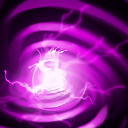 EMP is invoked with three instances of
EMP is invoked with three instances of  Wex.
Wex.
 EMP
EMP: After a 2.9 second delay, creates an electro-magnetic pulse that burns mana off enemies within the radius of effect, they also take damage equal to the burnt mana. On top of this,
 Invoker
Invoker recovers 50% of the mana burned off enemies.
 EMP's scaling is based on
EMP's scaling is based on  Wex:
Wex:
*
Mana Burned: 100/175/250/325/400/475/550
Delay: 2.9 secs
Radius: 675
Cooldown: 30
Mana Cost: 125
In my build,
 EMP
EMP is the weakest spell throughout the game, as I prefer delaying the points in
 Wex
Wex.
Now, listen:
You may be like: But goo dude its so cool you can like, do tornado and then u burns the manas and you only use 2 spells really good stuff and they cant use spells dude..
If you see
 EMP
EMP's scaling, you will notice that you need at least like five points in
 Wex
Wex for it to burn a decent amount of mana, and to get all these points early (where an
 EMP
EMP could turn a fight) you
need to put points in  Wex, the weakest orb.
Wex, the weakest orb.
A build that focuses on putting points on
 Wex
Wex early leaves you with low strength from the lack of
 Quas
Quas, and low damage and intelligence from the lack of
 Exort
Exort, and it puts you at this sort of chaos initiator position, that has poor solo kill potetial, really no way of fighting back but escaping with
 Ghost Walk
Ghost Walk and weak pushing, etc. And that doesnt even take into account the fact that you could miss your
 EMP
EMP.
I want you to forget about all that nonsense of  Quas
Quas  Wex,
Wex,  Tornado
Tornado  EMP stuff and stop thinking of
EMP stuff and stop thinking of  EMP as an AOE mana burn, because it's not.
EMP as an AOE mana burn, because it's not.
 EMP is not a mana burn, it's a mana steal.
EMP is not a mana burn, it's a mana steal. It's strongest point is that half the mana burnt is sent to
 Invoker
Invoker. Yet another reason why QW
 Invoker
Invoker is poor, because even if you land a huge
 EMP
EMP, you have no other good spells to use that mana on.
In my build, you are well armed by the time you reach high levels (23-24-25) and you start using
 EMP
EMP a bit more in your combos, also, because of
 Aghanim's Scepter
Aghanim's Scepter (and
 Octarine Core
Octarine Core sometimes) your
 Invoke
Invoke's cooldown is so low that you can allow yourself to drop a couple more spells you generally wouldn't, like the casual
 Ice Wall
Ice Wall or even
 Cold Snap
Cold Snap a guy. You will even have
 Refresher Orb
Refresher Orb sometimes at this point, using like 4 spells and then refreshing will take about half your mana pool, and you can use
 EMP
EMP here and really take advantage of it's mana steal, for the second round of refreshed spells. Landing
 EMP
EMP on 3 heroes will give you about 1500 mana instantly, so that's pretty insane.
We will talk about this more in the combo section.
2.1.5. Claws of Tornarus (Tornado)
 Tornado is invoked with one instance of
Tornado is invoked with one instance of  Quas and two instances of
Quas and two instances of  Wex.
Wex.
 Tornado
Tornado: Creates a cyclone that travels in a straight line lifting enemies, similar to euls, disables them while lifted, and deals damage when dropped back down to the ground.
 Tornado
Tornado deals a base damage of 70.
 Tornado's scaling is based on
Tornado's scaling is based on  Quas and
Quas and  Wex, look at the colors:
Wex, look at the colors:
*
Travel Distance: 800/1200/1600/2000/2400/2800/3200
*
Bonus Damage: 45/90/135/180/225/270/315
*
Cyclone Duration: 0.8/1.1/1.4/1.7/2.0/2.3/2.6
Cooldown: 30
Mana Cost: 150
 Tornado
Tornado is your best setup spell, it's the first spell in most combos and in the later game it can be used to catch fleeing enemies, as with max
 Wex
Wex it gets a whopping 3200 travel distance with a 1000 travel speed.
Before getting the points on
 Wex
Wex you still have the points in
 Quas
Quas for the disable time, just enough for landing
 Chaos Meteor
Chaos Meteor.
*
 Tornado
Tornado, just like euls, also has a purge effect. You can use it to purge off a bunch of effects, runes, buffs like
 Mask of Madness
Mask of Madness, etc.
* Remember that enemies are completely invulnerable while cycloned, so you still need to time your spells to hit after they land. The cyclone duration is based on
 Quas
Quas, so be mindful of how many levels of
 Quas
Quas you have as well.
* Keep in mind that
 Tornado
Tornado provides flying vision along its path as it travels, so it can be used as a scouting spell of sorts if you need to find an enemy in the fog of war. You and your team can subsequently use this vision in combination with your other spells, such as following up a successful cyclone with a global range
 Sun Strike
Sun Strike.
 Tornado
Tornado's cooldown is relatively short compared to other spells, in the late game it's a spell you can allow yourself to use to kill creepwaves. Remember you need a bunch of points in
 Wex
Wex to have decent damage.
2.1.6. Gaster's Mandate of Impetuous Strife (Alacrity)
 Alacrity is invoked with two instances of
Alacrity is invoked with two instances of  Wex and one instance of
Wex and one instance of  Exort.
Exort.
 Alacrity
Alacrity: Places a buff on an allied unit/hero or
 Invoker
Invoker himself for a duration. The buff provides an attack speed and attack damage bonus.
 Alacrity scales with
Alacrity scales with  Wex and
Wex and  Exort:
Exort:
*
Bonus Attack Speed: 30/40/50/60/70/80/90
*
Bonus Attack Damage: 30/40/50/60/70/80/90
Duration: 9
Cooldown: 15
Mana Cost: 45
 Alacrity
Alacrity was one of the main buff points for
 Invoker
Invoker in 6.85, especially in the early levels, which is fantastic and I'll tell you why:
So, in my build, naturally an  Exort focused build, you get a lot of auto attack damage naturally, and you have fairly good nuking power with
Exort focused build, you get a lot of auto attack damage naturally, and you have fairly good nuking power with  Exort based spells.
Exort based spells.
At level 6 (in the standard build), you get your first point in
 Wex
Wex and you already have points in
 Exort
Exort. That means that if you
 Alacrity
Alacrity yourself and have three instances of
 Exort
Exort up your autoattacks can hit to up to 180 damage per hit (which is about 70-ish natural damage and from stats like
 Power Treads
Power Treads on intelligence, then about 40-something from the
 Exort
Exort instances (and the
 Exort
Exort extra intelligence)
plus 60 more from  Alacrity
Alacrity.
If you add the fact that you can
 Cold Snap
Cold Snap someone and use an
 Urn of Shadows
Urn of Shadows charge on them, AND you have
 Forge Spirit
Forge Spirits AND you can
 Sun Strike
Sun Strike, you can pretty much solo kill anyone if you get close enough to them.
Also even if the game is going south you can take a large jungle camp in a few seconds with all that damage, and you become a beast at pushing towers.
Remember you can  Alacrity allies and creeps, so something you can do to passively push the enemy middle tower is create
Alacrity allies and creeps, so something you can do to passively push the enemy middle tower is create  Forge Spirits and
Forge Spirits and  Alacrity one of them, and then go farming back jungle or another lane while they push.
Alacrity one of them, and then go farming back jungle or another lane while they push. You can also
 Alacrity
Alacrity a siege creep if you think it's worth it.
In the late game,
 Alacrity
Alacrity becomes less of a fighting spell and more of a pushing/farming tool, but if you have put everything on cooldown it can help you a lot to dish out damage.
Also you can help out disable-based right click heroes in your team (heroes like
 Faceless Void
Faceless Void,
 Sven
Sven, etc), by giving them the buff before they go in.
But yea, in terms of laning you don't really need
 Alacrity
Alacrity to last hit, at all, because of
 Exort
Exort, but it makes it so each attack you send as harass is much stronger. Really you can take something like a
 Storm Spirit
Storm Spirit down to half health with 3 attacks despite their high armor, and you can send a
 Forge Spirit
Forge Spirit to throw attacks on them and follow them around (which doesnt really do much damage, but takes their armor down) and harass them even harder with right clicks, and really zone them out without the need of spells (waveclears, etc).
2.1.7. Harlek's Incantation of Incineration (Sun Strike)
 Sun Strike is invoked with three
Sun Strike is invoked with three  Exort instances.
Exort instances.
 Sun Strike
Sun Strike: After a small delay, deals pure damage in a small area.
 Invoker
Invoker can cast this globally. The damage is divided and distributed evenly across all units it hits.
 Sun Strike
Sun Strike scales only with
 Exort
Exort:
*
Damage: 100/162.5/225/287.5/350/412.5/475
Cooldown: 25
Mana Cost: 175
To be honest, it's a global pure damage nuke, not much to it. I can't really tell you how useful it becomes until the combo section, but still:
*
 Sun Strike
Sun Strike is one of
 Invoker
Invoker's most useful spells, as it has utility at all points in the game. During the laning stage,
 Invoker
Invoker can use it to add his striking power to a gank, especially if combined with a friendly stun that holds an enemy in place for more than 1.7 seconds. Once past the laning stage, it can be used to snipe fleeing enemies or check Roshan's pit.
 Sun Strike
Sun Strike's delay makes it hard to land on enemies, so some set-up or prediction is required in order to use it well. If you can predict an enemy player's movements, you can finish them off from across the map if they're already at low health.
* One very useful way to use
 Sun Strike
Sun Strike is to target it on the enemy's fountain if you or your teammates cannot finish off a teleporting enemy hero in time. As they are most likely going to arrive in their fountain, you can kill them inside their own base while they are still at low health.
* Beware that
 Sun Strike
Sun Strike splits its damage evenly among all struck enemy units, so if more than one enemy is within its effect radius the spell loses at least half of its potency. As such, smart enemy players clump up alongside their own low-health teammates in order to prevent Sun Strike from killing them.
*
 Sun Strike
Sun Strike can pierce spell immunity. This means that if an enemy hero attempts to activate spell immunity and then teleport out (such as
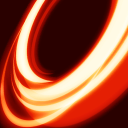 Blade Fury
Blade Fury or
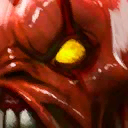 Rage
Rage), you can still damage them and potentially kill them before they can escape.
2.1.8. Culween's Most Cunning Fabrications (Forge Spirit)
 Forge Spirit is invoked with two instances of
Forge Spirit is invoked with two instances of  Exort and one instance of
Exort and one instance of  Quas.
Quas.
 Forge Spirit
Forge Spirit: Instantly creates a
 Forge Spirit
Forge Spirit under
 Invoker
Invoker's control. These spirits are ranged and move at a fixed 320 movement speed.
 Forge Spirit
Forge Spirits have a passive skill called melting strike. This passive makes
 Forge Spirit
Forge Spirit's attacks against enemy heroes reduce 1 armor per attack (only against heroes), this passive costs 40 mana to the spirit if and only if the attack lands and the armor reduction takes place.
If you have four or more points in both  Quas and
Quas and  Exort, two spirits are summoned instead of one.
Exort, two spirits are summoned instead of one.
 Forge Spirit scales with
Forge Spirit scales with  Quas and
Quas and  Exort. Also they really scale, bear with me here:
Exort. Also they really scale, bear with me here:
*
Spirit's Attack Damage: 29/38/47/56/65/74/83
*
Spirit's Health Pool: 300/400/500/600/700/800/900
*
Spirit's Armor: 0/1/2/3/4/5/6
*
Spirit's Attack Range: 300/365/430/495/560/625/690
*
Spirit's Mana Pool: 100/150/200/250/300/350/400
*
Spirit's Duration: 20/30/40/50/60/70/80
Cooldown: 30
Mana Cost: 75
 Forge Spirit
Forge Spirits are a fairly significant part of my build's early game, both for their utility, damage output contribution, lane control, scouting, etc. Also they are part of a few combos.
* One of the strongest aspects of
 Forge Spirit
Forge Spirits is that they reduce enemy heroes' armor with each attack, increasing their vulnerability to physical damage at the same time as they are dealing that damage. This makes them very strong at killing enemy heroes with enough lockdown, such as from
 Cold Snap
Cold Snap.
*
 Forge Spirit
Forge Spirits make good targets for
 Alacrity
Alacrity, as they can deal tremendous amounts of damage when focusing a single target, whether in a teamfight or while pushing.
*
 Forge Spirit
Forge Spirits usually last longer than the cooldown on summoning them, based on how many levels of
 Quas
Quas  Invoker
Invoker has learned. As such, leveling
 Quas
Quas can allow
 Invoker
Invoker to have the
 Forge Spirit
Forge Spirits active while having different spells on
 Invoke
Invoke, which can allow
 Invoker
Invoker to have two spells for immediate use and a third queued to
 Invoke
Invoke, while the
 Forge Spirit
Forge Spirits are active.
* Summoning
 Forge Spirit
Forge Spirits while there are active instances immediately destroys them, with no gold or experience bounty for enemy heroes. Be sure to re-summon your
 Forge Spirit
Forge Spirits if they are about to be killed by the enemy, in order to deny them any gold or experience they may earn from killing them.
You will be using  Forge Spirits in two ways throughout the match.
During the early game:
Forge Spirits in two ways throughout the match.
During the early game:
* Locking aggro of your spirit on the opposing mid to harass them and take their armor down, even if the damage one spirit deals is very minor, the armor reduction will force the enemy to kill the spirit and that takes focus off CSing.
* Even if you dont take runes because you dont have a
 Bottle
Bottle and it's risky, you can safely send your
 Forge Spirit
Forge Spirit to the rune with anticipation, just to deny the rune off the enemy mid. You can do it with both runes once you have two spirits.
* When your lane is going well, and you dont really need support from your spirits, you can send them to the large camp (spawning them at mid at about xx:40), and using them to stack it (attacking at xx:53, like always). And when you have two spirits you can go and stack two camps at once if you want, just a little bit more micro. These stacks help boost farm, you can have a triple large camp stack and just
 Chaos Meteor
Chaos Meteor the **** out of it.
During mid and late game:
* You arent' going to be using
 Forge Spirit
Forge Spirits for fighting as much unless you are dealing with a disabled target, instead, they will help you take down buildings.
* Use them to farm the jungle while you do other stuff, like pushing a lane and re-summoning them when you get to the tower.
* Even though they reduce armor to heroes, they don't do it to creeps, so their damage is rather low so they aren't the best at split pushing by themselves, you can still have them stop a creepwave for a moment, depends on how tanky they get.
2.1.9. Tarak's Descent of Fire (Chaos Meteor)
 Chaos Meteor is invoked with two instances of
Chaos Meteor is invoked with two instances of  Exort and one instance of
Exort and one instance of  Wex.
Wex.
 Chaos Meteor
Chaos Meteor: Creates a meteor that falls down at the target point after a 1.3 delay, then rolls. Deals damage in the first impact, and burns everyone who touches it or it's trail. The burn effect is placed as a debuff on affected enemies, and enemies can be affected by multiple of these debuffs at once.
 Chaos Meteor scales with both
Chaos Meteor scales with both  Exort and
Exort and  Wex:
Wex:
*
Travel/Roll Distance: 465/615/780/930/1095/1245/1410
*
Main Damage per Interval: 57.5/75/92.5/110/127.5/145/162.5
*
Burn Damage per Second: 11.5/15/18.5/22/25.5/29/32.5
Burn Duration: 3
Cooldown: 55
Mana Cost: 200
* Due to the delay,
 Chaos Meteor
Chaos Meteor is best combined with a set-up spell, such as
 Tornado
Tornado or the active from
 Eul's Scepter of Divinity
Eul's Scepter of Divinity. Unlike
 Sun Strike
Sun Strike,
 Chaos Meteor
Chaos Meteor does not have a global range that allows room for prediction.
* In order to get the most from a single meteor, it is best to try to keep enemies inside of the meteor itself for as long as possible. Spells that can forcibly displace the enemy such as Deafening Blast synergize well with
 Chaos Meteor
Chaos Meteor as the target also gets disabled for the duration of the displacement.
*
 Chaos Meteor
Chaos Meteor has the longest cooldown out of all of
 Invoker
Invoker's spells. Be careful about when you cast it, as you have to wait almost a minute to cast it again. Because of this and how powerful of a spell it is, it's the core of
 Refresher Orb
Refresher Orb combos.
2.1.10. Buluphont's Aureal Incapacitator (Deafening Blast)
 Deafening Blast is invoked with one instance of each orb,
Deafening Blast is invoked with one instance of each orb,  Quas,
Quas,  Wex and
Wex and  Exort.
Exort.
 Deafening Blast
Deafening Blast: Creates a wave that travels forward, damaging, knocking back and disarming enemies caught by it. When all
 Quas
Quas,
 Wex
Wex and
 Exort
Exort are in level 7,
 Deafening Blast
Deafening Blast creates multiple waves all around
 Invoker
Invoker on cast (you can still aim the one in front of
 Invoker
Invoker like you would normally).
 Deafening Blast scales with all
Deafening Blast scales with all  Quas,
Quas,  Wex and
Wex and  Exort:
Exort:
*
Disarm Duration: 1/1.5/2/2.5/3/3.5/4
*
Knockback Distance: 45.6/88.6/133.5/171.5/205/242.1/274.3
*
Knockback Duration: 0.25/0.5/0.75/1/1.25/1.5/1.75
*
Damage: 40/80/120/160/200/240/280
Cooldown: 40
Mana Cost: 200
If you want to see the maths for the knockback, here they are:
Affected units are moved in 0.03 second intervals.
They are moved 8/16/25/33/41/50/58 times (Level of Quas * 25 / 3).
The first 1/3 times, units are moved linearly, by a distance of 6 per interval. 1/3 of the intervals is 2/5/8/11/13/16/19 times, which results in a distance of 12/30/48/66/78/96/114.
For the remaining 6/11/17/22/28/34/39 intervals, the units are moved exponentially with 0.98 times the speed of the previous interval.
So the remaining intervals together (on each level) move the units by a distance of (sum 6 * 0.98 ^ 1 to 6 * 0.98 ^ t =) 33.56/58.58/85.46/105.5/127.02/146.08/160.29.
Summed up, the total distance on each level is 45.56/88.58/133.46/171.5/205.02/242.08/274.29.
As conclusion, the knockback starts at a speed of 200 and decreases exponentially.
 Deafening Blast
Deafening Blast has a bunch of uses, it makes part of combos, it can just be dropped in a fight as a casual aoe disable and disarm, and also as a gap creator for escaping. It's also very easy to
 Invoke
Invoke, as you can hit the three keys at once, and then invoke it with a second move.
* In general,
 Deafening Blast
Deafening Blast is best utilized with levels in
 Quas
Quas and
 Exort
Exort for the stun, push and nuking power.
 Wex
Wex applies the disarm after the stun, which is situationally useful depending on the target, but for general purpose
 Quas
Quas and
 Exort
Exort are more important.
* Never underestimate the disarm portion of
 Deafening Blast
Deafening Blast, however. If cast against an enemy carry in a teamfight, it can render them unable to attack at a critical juncture, all the more so if they have already used their spell immunity beforehand.
* The displacement due to the push can be extremely powerful in the right situation. Cast in the right direction,
 Deafening Blast
Deafening Blast can push enemies over impassable terrain, or in the direction of teammates.
3.1. Attack Based Cold Snap Combo
This combo uses 3 spells, two core spells and an extra optional spell. The core of it is forge spirits and
 Cold Snap
Cold Snap, but you can add in either
 Alacrity
Alacrity for extra right click damage or
 Sun Strike
Sun Strike for a quick finisher.
This combo is fairly simple to perform and the difficulty lies in getting close enough for your  Forge Spirit to attack properly and help proc
Forge Spirit to attack properly and help proc  Cold Snap
Cold Snap. Other than that, the
 Sun Strike
Sun Strike can be tricky to land some times, if you are planning to use sun strike with this combo, the easiest way to make sure you land it is to do it as early as possible, for multiple reasons:
* Early in the combo you are sure the enemy is under
 Cold Snap
Cold Snap, and if they are getting constantly stunned from it, their movement is slowed and makes it easier to land the
 Sun Strike
Sun Strike.
* When suddenly initiating on an enemy with
 Cold Snap
Cold Snap, they will most of the time panic and try to run back to their tower, in this panic retreat they usually forget about sun strike and will not try to dodge it.
* Sometimes enemies will run towards their creeps after getting initiated on (as long as their creeps are behind them) this will make sun strike divide it's damage and leave it mostly harmless.
If you are using this as a killing move chances are you are in the laning stage and in a 1v1 situation, in the early game every little extra damage helps, so be sure to have your
 Power Treads
Power Treads on intelligence and your three instances of exort at all times.
The invoking setup is very simple.
 Invoke
Invoke  Forge Spirit
Forge Spirit first, then
 Cold Snap
Cold Snap, this way
 Forge Spirit
Forge Spirit will be in the second slot, and in case you use one of the optional extra spells, it will get rid of
 Forge Spirit
Forge Spirit instead of
 Cold Snap
Cold Snap, as having
 Cold Snap
Cold Snap still
 Invoke
Invoked can be useful in case you need to use it one more time (and it has a relatively short cooldown). So, if you for example,
 Invoke
Invoke  Sun Strike
Sun Strike, it will move cold snap to the second slot and all will be chill.
So when going in you will have cold snap in the first slot,
 Forge Spirit
Forge Spirit on the second slot and three instances of
 Exort
Exort for extra damage.
In regular hotkeys its like so:
F ( Forge Spirit), D (
Forge Spirit), D ( Cold Snap), R (invokes
Cold Snap), R (invokes  Sun Strike), you right click as much as possible, then D (
Sun Strike), you right click as much as possible, then D ( Sun Strike).
Sun Strike).
When using  Alacrity the combo changes the invoking order a bit, at least how the setup goes:
Alacrity the combo changes the invoking order a bit, at least how the setup goes:
Here you want to
 Invoke
Invoke  Alacrity
Alacrity first, then
 Cold Snap
Cold Snap, and have your instances as
 Quas
Quas,
 Exort
Exort,
 Exort
Exort, in that order ideally, you'll see why in a second.
So you have  Cold Snap in the first slot,
Cold Snap in the first slot,  Alacrity in the second slot, and your instances as QEE.
Hotkeys like this:
F (
Alacrity in the second slot, and your instances as QEE.
Hotkeys like this:
F ( Alacrity, cast on self), D (
Alacrity, cast on self), D ( Cold Snap), R (invokes
Cold Snap), R (invokes  Forge Spirit), E (
Forge Spirit), E ( Exort once, which kicks out that first
Exort once, which kicks out that first  Quas instance, leaving you with three
Quas instance, leaving you with three  Exort), D (
Exort), D ( Forge Spirit), then right clicks.
Forge Spirit), then right clicks.
3.2. DoT Based Cold Snap Combo
This combo is also based on
 Cold Snap
Cold Snap, but it doesn't rely on right clicks and attacks from
 Forge Spirit
Forge Spirits to cause the procs.
Instead, you will be using damage over time.
It uses 2 main spells:
 Cold Snap
Cold Snap and
 Ice Wall
Ice Wall, but there are some things that make the combo stronger,
 Urn of Shadows
Urn of Shadows for extra damage over time, and
 Sun Strike
Sun Strike.
The combo consists of placing an
 Ice Wall
Ice Wall over an enemy affected by
 Cold Snap
Cold Snap, slowing them and making them take damage over time, causing
 Cold Snap
Cold Snap to proc,
these two effects combined hinder enemy movement enough for  Sun Strike to be really easy to land and incorporate to the combo.
Sun Strike to be really easy to land and incorporate to the combo. Personally I like performing this once I already have
 Urn of Shadows
Urn of Shadows, it makes the combo much more consistent:
So how it works is that, you cast
 Cold Snap
Cold Snap on your target, which causes a first proc and puts cold snap in it's "
between procs cooldown" which is about a second, a little bit less.
If you dont have  Urn of Shadows, your only source of damage over time is ice wall
Urn of Shadows, your only source of damage over time is ice wall (
 Chaos Meteor
Chaos Meteor doesnt count here obviously), and you are going to have to land it very quickly, so it catches the enemy just after the proc cooldown ends, to get the best out of
 Cold Snap
Cold Snap. Some times the enemy is in front of you but there is some distance between you and them, so you have to do the turning cast of ice wall to catch them, and that is really hard to do when your enemy is not slowed or getting stunned from
 Cold Snap
Cold Snap.
If you have  Urn of Shadows
Urn of Shadows, you cast
 Cold Snap
Cold Snap and
 Urn of Shadows
Urn of Shadows on your target, and get yourself in position for
 Ice Wall
Ice Wall, as soon as the second proc happens (caused by
 Urn of Shadows
Urn of Shadows' damage) you cast it on the stunned enemy, and then, with them under the
 Ice Wall
Ice Wall slow,
 Cold Snap
Cold Snap procing from two sources of damage over time, you cast
 Sun Strike
Sun Strike and finish them off,
plus right clicking.
When I dont have urn yet and there is an opportunity for a kill and I am too far for forge spirits or the spell is on cooldown or whatever, i do it like this: I cast
 Cold Snap
Cold Snap on them and I throw an autoattack in the air, then I position myself for ice wall, when the attack hits and they are stunned, then I cast
 Ice Wall
Ice Wall and proceed from there. This doesnt work at close distance because of the cooldown between procs, and your autoattack could land on the enemy during the cooldown of the initial proc, and that is no good.
It does need a bit of practice to pull off, but then again, most of  Invoker too.
The invoking setup is simple as well
Invoker too.
The invoking setup is simple as well,
 Cold Snap
Cold Snap on first slot,
 Ice Wall
Ice Wall in second slot and three instances of
 Exort
Exort. Once you land the combo you press R which invokes
 Sun Strike
Sun Strike, and you cast it on the poor fool.
It's easier to use and more consistent than combo 1 (when you got urn).
3.3. Secondary Ice Wall Combo (No Cold Snap)
Lets say there is an early fight in mid and you managed to take an enemy down using the first combo,
so  Alacrity,
Alacrity,  Cold Snap and
Cold Snap and  Forge Spirits are all on cooldown
Forge Spirits are all on cooldown, but the fight is still going. This combo is quite strong but needs some practice to land consistently, as it doesnt have
 Cold Snap
Cold Snap in it the enemies have a better chance of fighting back.
The combo uses 3 spells,  Tornado,
Tornado,  Ice Wall and
Ice Wall and  Sun Strike
Sun Strike. You can also use
 Chaos Meteor
Chaos Meteor instead of
 Sun Strike
Sun Strike though.
It's a really close range combo, almost melee range combo.
It consists of lifting an enemy and placing an
 Ice Wall
Ice Wall under them, then also casting the
 Sun Strike
Sun Strike (or
 Chaos Meteor
Chaos Meteor) on them. After landing from
 Tornado
Tornado they will be right in the middle of the
 Ice Wall
Ice Wall and they will have a real hard time leaving it in order to get away from the
 Chaos Meteor
Chaos Meteor or
 Sun Strike
Sun Strike.
The reason I say this is a close range combo is because in my build you dont get much levels on
 Wex
Wex until later, so both your
 Tornado
Tornado here and your
 Chaos Meteor
Chaos Meteor (if you decide to use it instead of
 Sun Strike
Sun Strike)
have really short travel distance, and also because of
 Ice Wall
Ice Wall's cast range is fixed short.
How I perform this is, casting
 Tornado
Tornado at a medium distance, then
 Chaos Meteor
Chaos Meteor or
 Sun Strike
Sun Strike while running towards their way, and then when I get there, cast
 Ice Wall
Ice Wall under them, so when
 Tornado
Tornado ends it all comes down simultaneously.
Your invoking setup consists of two spells,  Tornado and
Tornado and  Sun Strike or
Sun Strike or  Tornado and
Tornado and  Chaos Meteor.
Chaos Meteor.
* If you are using
 Sun Strike
Sun Strike, you can either have it in the first slot if you think you'll need to use it again, or have
 Tornado
Tornado in the first slot, if you think you will need to use that more than once in a fight. Both spells have about 25-30 second cooldowns so it's up to you. I recommend having
 Sun Strike
Sun Strike as the first slot, as it's a much better damage output and it has global range compared to a level 1
 Tornado
Tornado's sad travel distance.
* If you are using
 Chaos Meteor
Chaos Meteor, you want to have tornado as the first slot all of the times, as you dont get to cast meteor twice in a fight unless you have
 Refresher Orb
Refresher Orb, due to it's long cooldown. Also, have your
 Quas
Quas  Quas
Quas  Exort
Exort ready to
 Invoke
Invoke  Ice Wall
Ice Wall.
3.4. Simple Cyclone Combo (Eul's Combo)
This is the classic  Invoker exort euls combo, it's very strong and it's very easy to perform.
Invoker exort euls combo, it's very strong and it's very easy to perform. There are a couple of ways to counter it, but at the same time
 Invoker
Invoker has ways to counter that (it gets complicated).
This combo uses 3 spells and a eul's scepter. These are
 Sun Strike
Sun Strike,
 Chaos Meteor
Chaos Meteor and
 Deafening Blast
Deafening Blast. The combo is not that hard to perform, you just need to get in range and cast everything timing it accordingly.
This combo can be countered by invulnerability spells, especially with those with low cast points. For example
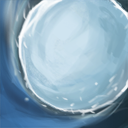 Snowball
Snowball,
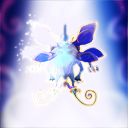 Phase Shift
Phase Shift, etc.
Also bkb. Basically they will just use one of those as soon as the euls ends and they will dodge everything. You can deal with this with
 Scythe of Vyse
Scythe of Vyse, but that is much more difficult;
I'll explain how later on.
To perform it, you want to
 Invoke
Invoke  Chaos Meteor
Chaos Meteor first and then
 Sun Strike
Sun Strike, so that
 Sun Strike
Sun Strike is in the first slot and it isn't pushed out when you
 Invoke
Invoke  Deafening Blast
Deafening Blast, so you have it available for a second use just in case.
You cyclone your target with euls, wait about less than a second and cast
 Sun Strike
Sun Strike, immediately after
 Sun Strike
Sun Strike you put the meteor down, and
 Invoke
Invoke  Deafening Blast
Deafening Blast. I personally dont have the orbs ready because invoking
 Deafening Blast
Deafening Blast is very quick and easy to do.
You can just press all three  Quas
Quas  Wex and
Wex and  Exort at the same time with three fingers
Exort at the same time with three fingers, then move your index (that you use for
 Exort
Exort) a bit and press
 Invoke
Invoke, while moving your middle finger a bit down and presing D, for first slot, and cast it.
Its all instant, full muscle memory.
You have to try and time
 Deafening Blast
Deafening Blast just as euls ends, so it acts as a disable that forces the enemy to stay in place for the
 Sun Strike
Sun Strike and meteor,
also dealing some damage itself.
Depending on your level of
 Exort
Exort,
this combo can deal from 800 damage and up to 1500+ damage, so we are talking about
 Shadow Fiend
Shadow Fiend euls damage level here. During the mid game when this combo is the most relevant (like around minute 18-20), your
 Invoke
Invoke's cooldown is still long enough for you to be mindful of what you are doing with your spells (
past 17 and with aghs or octarine you can invoke whatever you want, whenever you want; but until then you have to keep invoke's cooldown in mind). So for performing this combo you have to
 Invoke
Invoke two things, then wait for
 Invoke
Invoke to come off cooldown so you can
 Invoke
Invoke  Deafening Blast
Deafening Blast mid combo, so all this preparation and the long cooldown of
 Chaos Meteor
Chaos Meteor (and kinda long cooldown of
 Deafening Blast
Deafening Blast) you can only do this combo every once in a while.
Now, I dont want you to be taking this  Invoke cooldown thing too seriously and not invoke anything and have
Invoke cooldown thing too seriously and not invoke anything and have  Sun Strike and
Sun Strike and  Chaos Meteor invoked 24/7 ready to gank. You need to use forge spirits, you need to use
Chaos Meteor invoked 24/7 ready to gank. You need to use forge spirits, you need to use  Alacrity to speed up your farm
Alacrity to speed up your farm. You have 10 spells, use them, but manage them well, especially the swapping around that does not put
 Invoke
Invoke on cooldown,
learn to abuse that.
Something worth noting about this combo is that, even if the spell damage components are based on  Exort, the total damage it deals is not completely based on
Exort, the total damage it deals is not completely based on  Exort; it's also parcially based on
Exort; it's also parcially based on  Quas.
Quas. It makes
 Deafening Blast
Deafening Blast have a better knockback, effectively making the disable longer and so the time the target is under
 Chaos Meteor
Chaos Meteor longer.
Hex from  Scythe of Vyse is one way for
Scythe of Vyse is one way for  Invoker to make sure the combo works better on some heroes by disabling them mid combo
Invoker to make sure the combo works better on some heroes by disabling them mid combo to prevent them of using defensive spells/items like bkb.
The problem with it is that it is very hard to time. You do it like this:
Euls,
 Sun Strike
Sun Strike,
 Chaos Meteor
Chaos Meteor, then you wait for euls to end, having
 Deafening Blast
Deafening Blast invoked (
listen to the sound of the cyclone), as soon as the cyclone ends (
which is when the invulnerability ends, not the cyclone (misleading animations)) you
 Deafening Blast
Deafening Blast them, which disables them with the pushback, and before the push ends, you hex them to keep them disabled while the meteor rolls, also make sure you drop a couple right clicks and if you can even
 Cold Snap
Cold Snap them,
you have to make sure they don't use their escape if you wish to land the kill.
3.5. Multiple Cyclone Combo
Very similar to the last combo, this one is based on cycloning multiple heroes with
 Tornado
Tornado, to setup a
 Chaos Meteor
Chaos Meteor and disable the enemies with
 Deafening Blast
Deafening Blast.
This is a very strong combination for when going into the later game, without much setup and just with 3 spells you can dish out considerable damage and create chaos with the disarm and huge aoe damage over time.
I like going in on teamfights when they are already going, because you can sometimes catch low hp heroes that are killed just from the
 Tornado
Tornado and
 Deafening Blast
Deafening Blast even when the
 Chaos Meteor
Chaos Meteor didnt reach them,
also it's not that uncommon coming in the fight with  Tornado and taking a bunch of buffs off of heroes.
This combo isnt as nuke powerful as the single cyclone euls combo because you dont use
Tornado and taking a bunch of buffs off of heroes.
This combo isnt as nuke powerful as the single cyclone euls combo because you dont use  Sun Strike to add up damage
Sun Strike to add up damage. When I see an important hero I have to take down and this combo didnt kill them, I lift them up again with euls and pop a
 Sun Strike
Sun Strike to finish them off (or at least take them down to a critical Hp and force them to back out) if there is a big clump of people sometimes
 Ice Wall
Ice Wall is better than
 Sun Strike
Sun Strike, for obvious reasons. Also spawning
 Forge Spirit
Forge Spirits is great for distracting enemy fire, and they passively take down enemy armor after a
 Tornado
Tornado, because when performing
 Tornado
Tornado based combos, the enemy will either back out or focus
 Invoker
Invoker, depending on how the combo affected them.
We will be talking about this combo in the refresher combo section.
3.6. Full Combination
This is one of the difficult combos you will be using in the very late game (because it requires more points in
 Wex
Wex). It's similar to the last one but it adds
 EMP
EMP (and
 Sun Strike
Sun Strike).
There are a lot of spells in this combo and there are 2 ways of performing it, the first one can be a tad easier to grasp, but the second is a better candidate for refreshing.
The cast order for the first one is as so:
 Tornado,
Tornado,  EMP,
EMP,  Chaos Meteor,
Chaos Meteor,  Deafening Blast,
Deafening Blast,  Sun Strike.
Overall simple to understand
Sun Strike.
Overall simple to understand,
casting everything is a little bit more challenging. Here you dont have to aim
 Sun Strike
Sun Strike at a particular hero, I generally just cast it on the last hero in the cyclone, as they sometimes get pushed away from the
 EMP
EMP because of
 Deafening Blast
Deafening Blast.
Note that when you cast  EMP and meteor, the target heroes are cycloned, and as soon as
EMP and meteor, the target heroes are cycloned, and as soon as  Tornado ends you cast
Tornado ends you cast  Deafening Blast and you
Deafening Blast and you  Sun Strike the heroes while they are being knocked back from it. Easy.
The second order is like this:
Sun Strike the heroes while they are being knocked back from it. Easy.
The second order is like this:
 Tornado,
Tornado,  EMP,
EMP,  Sun Strike,
Sun Strike,  Chaos Meteor,
Chaos Meteor,  Deafening Blast.
This combo is tricky because you have to cast one more spell while the heroes are cycloned
Deafening Blast.
This combo is tricky because you have to cast one more spell while the heroes are cycloned, so you have to be very fast with the
 Sun Strike
Sun Strike so heroes dont fall from
 Tornado
Tornado and walk away before you cast
 Deafening Blast
Deafening Blast. This combo is great for refreshing because when you finish casting everything you are left with
 Chaos Meteor
Chaos Meteor and
 Deafening Blast
Deafening Blast invoked,
so you can recast them right away, back to back.
We will talk about this more in the refresher combo section.
This combo has a simplified version that doesn't use
 Sun Strike
Sun Strike, and it's what I recommend you try doing at first,
because it's less likely you mess up some of the spell orders.
Basically this:
 Tornado
Tornado,
 EMP
EMP,
 Chaos Meteor
Chaos Meteor,
 Deafening Blast
Deafening Blast.
This one is also good for refreshing, for the same reason the last one is.
These combos require really quick fingers for the invoking, as it can get fairly complex for the optimal results.
See this:
You are going to set your invokes as so,
 EMP
EMP on the first slot, and
 Tornado
Tornado in the second slot. Have two instances of
 Exort
Exort and one wex ready for
 Chaos Meteor
Chaos Meteor.
Press F, cast
 Tornado
Tornado, as soon as you cast it, press R, which invokes meteor, press F, cast
 EMP
EMP, then
 Invoke
Invoke  Deafening Blast
Deafening Blast with the two step move I taught you, then F to cast meteor, then wait, then D to cast
 Deafening Blast
Deafening Blast.
Yea... But it gets better.
4. Buckle Up! (Refresher Combos)
Ok, so we will be going over some refresher based combos here, most of them are simple additions to the complete combos, so they arent that hard to perform.
"Double meteor blast feels good"
-Grimorum
Most of the refresher combos consist on refreshing
 Invoker
Invoker's two most powerful spells,
 Chaos Meteor
Chaos Meteor and
 Deafening Blast
Deafening Blast, so the setup for refreshing is as simple ss having those two spells invoked.
So for instance, this is one of the simple refresher combos.
You have  Tornado on the second slot and
Tornado on the second slot and  Chaos Meteor on the first slot:
Chaos Meteor on the first slot:
 Tornado,
Tornado,  Chaos Meteor,
Chaos Meteor,  Deafening Blast,
Deafening Blast,  Refresher Orb,
Refresher Orb,  Chaos Meteor,
Chaos Meteor,  Deafening Blast.
Very simple, very easy to perform.
Deafening Blast.
Very simple, very easy to perform.
The following combo is one I like a lot when I get my hands on a refresher orb:
 Tornado,
Tornado,  EMP,
EMP,  Chaos Meteor,
Chaos Meteor,  Deafening Blast, refresh
Deafening Blast, refresh,
 Chaos Meteor,
Chaos Meteor,  Deafening Blast,
Deafening Blast,  Tornado,
Tornado,  Sun Strike.
Sun Strike.
Basically its like the last combo, but adding
 EMP
EMP and finishing it off with a cyclone to
 Sun Strike
Sun Strike combo. To be honest I wish I had more chances to do this combo, most of the times when I'm casting this my team is inside the enemy fountain.
Combos like this one, if landed properly and as long as the enemies dont have ways to resist them (
like bkbs) are far more powerful and teamfight turning than say, a black hole or some other big ultimate.
If you see three heroes coming at you, and you are decked out in items and levels, and everything is off cooldown, dont hesitate. Even if you get killed it's going to look cool and you may take someone with you.
Full refresh combo, the ultimate grand supreme:
Ok,
this is a very difficult combo, I have tried and failed to perform it and to be honest,
it's 100% overkill. You will not need this combo any time pretty much, it uses way too many spells and most heroes die before you get to cast half the stuff...
But I'm gonna tell ya how to do it anyway! Just for the looks!
It's a really difficult combo and it requires you to
 Invoke
Invoke perfectly and incredibly quickly,
here is how:
Basically in order to cast a perfectly timed combo you will need to
 Invoke
Invoke your spells and move your orb instances while casting other spells. In other words,
you will be multitasking.
To do this you will have to think one spell ahead, so
for example: you cast
 Tornado
Tornado, and as soon as you cast it, you
 Invoke
Invoke  Chaos Meteor
Chaos Meteor, then you cast
 EMP
EMP, as soon as you cast it you
 Invoke
Invoke  Deafening Blast
Deafening Blast, then you cast
 Chaos Meteor
Chaos Meteor, and as soon as you cast that you
 Invoke
Invoke the next spell and so on.
You cant cast, then  Invoke, then cast, then
Invoke, then cast, then  Invoke.
Invoke. You have to be casting and invoking at the same time,
familiarize yourself with the two slot system.
Another thing to keep in mind is how you can minimize the times you cast any orb, by using the replacement system.
Even if you use it for very simple things like:
When you
 Invoke
Invoke  Sun Strike
Sun Strike your instances are
 Exort
Exort  Exort
Exort  Exort
Exort, so you dont have to go
 Exort
Exort  Exort
Exort  Wex
Wex to
 Invoke
Invoke  Chaos Meteor
Chaos Meteor, you press
 Wex
Wex once and then
 Invoke
Invoke. And if you want to get
 Deafening Blast
Deafening Blast from there you just have to press
 Quas
Quas once, and then
 Invoke
Invoke.
All this little things are learned with time and practice, and all go towards mastering big combos that need quick invoking.
Oh and one last thing. I recommend having your important items on keys you can reach with your pinky finger and thumb, especially for
 Refresher Orb
Refresher Orb and
 Shiva's Guard
Shiva's Guard,
as they are casted mid combo. Try to not put these items on keys that you would have to reach with either your
index, middle or ring finger, as you want those to be on qwerdf all the time (rip legacy users).
Two things about this combo: 1)  Shiva's Guard
Shiva's Guard is optional, a nice aoe slow addition to keep people near
 Chaos Meteor
Chaos Meteor, you don't
have to have it..
2) You want to get up close to use
 Deafening Blast
Deafening Blast, at this point you should have circular blast and you have to make sure everyone is hit otherwise they won't be disabled.
With that said, the combo is the following:
 Tornado,
Tornado,  EMP,
EMP,  Sun Strike,
Sun Strike,  Chaos Meteor,
Chaos Meteor,  Deafening Blast,
Deafening Blast,  Shiva's Guard,
Shiva's Guard,  Refresher Orb,
Refresher Orb,  Shiva's Guard,
Shiva's Guard,  Chaos Meteor,
Chaos Meteor,  Deafening Blast,
Deafening Blast,  Sun Strike,
Sun Strike,  Tornado,
Tornado,  EMP,
EMP,  Ice Wall.
Ice Wall.
It sounds just like it looks when performed,
impossible and ********.
Anyway, best of luck.
Now, if we are done with the theory lets get into practice.
5.1. Laning & Early Game
The early game is  Invoker's weakest stage by far, mainly because of how his leveling up with
Invoker's weakest stage by far, mainly because of how his leveling up with  Quas,
Quas,  Wex and
Wex and  Exort work towards scaling spells. In my build, you need to at least be level 12 to do something and not have trash spells (that's 4-1-4-3 at 12). At that point you got double
Exort work towards scaling spells. In my build, you need to at least be level 12 to do something and not have trash spells (that's 4-1-4-3 at 12). At that point you got double  Forge Spirit, decent
Forge Spirit, decent  Quas spells, decent
Quas spells, decent  Exort damage and spells and you also got
Exort damage and spells and you also got  Invoke level 3.
Invoke level 3.
This section is about everything prior to that first online point, so sorta the first 15 minutes of the game. And as you will see shortly,  Invoker's early game is longer than most heroes', because of all the levels he has to get. So let's see:
Invoker's early game is longer than most heroes', because of all the levels he has to get. So let's see:
Naturally, you are going to go mid. This build is fairly ok for going something like safelane with supports but mid is the real deal, 1v1 and solo exp. Also when going mid you are going to block your creeps in pretty much every single game, dont go for bounty runes and dont take part of level 1 fights, you will end up dead and it's going to make your early game an uphill battle.  Invoker is widely considered the weakest hero on level 1, having no spells and very low everything (low base damage, 280 movement speed).
Invoker is widely considered the weakest hero on level 1, having no spells and very low everything (low base damage, 280 movement speed).
Starting items are very simple, you go  Tangoes (that can be either a set or have some
Tangoes (that can be either a set or have some  Tangoes shared) and then you go some stats (a full null tallisman, or three
Tangoes shared) and then you go some stats (a full null tallisman, or three  Iron Branches for
Iron Branches for  Magic Wand later if you have a mid matchup that requieres it, like going against any spammy heroes).
Magic Wand later if you have a mid matchup that requieres it, like going against any spammy heroes).
The laning phase is very simple on paper, but pulling it off is actually more of a sloppy process. But dont worry, it's not difficult to learn it with some practice, and some good old trial and error. Luckily this is a guide and I've done some of the errors already for you, so you have an easier time with the points that are the make or break of an Invoker game.
How to laning stage with invoker: afk in mid, last hit everything, thats it.
No but seriously, that's sort of what you want to do. In my build, you stay mid and get all the solo exp and last hits as you can, maybe on the first levels you will struggle a bit but with stat gain and points in  Exort you will start last hitting with ease, also with some advantage you can harass enemies out of lane just with right clicks.
Exort you will start last hitting with ease, also with some advantage you can harass enemies out of lane just with right clicks.  Invoker is a hero that doesnt have a single way of playing, and the same thing goes for my build, some modifications may apply.
Invoker is a hero that doesnt have a single way of playing, and the same thing goes for my build, some modifications may apply.
Do not gank, not because you need moar exp moar exp follow the guide, but because you really can't gank.  Invoker is not a ganking hero, at all, once you get euls things change a bit but still,
Invoker is not a ganking hero, at all, once you get euls things change a bit but still,  Invoker's strong point is adding stuff to the teamfight and really being a pain to deal with, slows, nukes, disarms, mana drain, all being tossed at you in fights. You dont really pin down invoker, and invoker doesnt pin down foes, he just combos the team. Help sidelanes with
Invoker's strong point is adding stuff to the teamfight and really being a pain to deal with, slows, nukes, disarms, mana drain, all being tossed at you in fights. You dont really pin down invoker, and invoker doesnt pin down foes, he just combos the team. Help sidelanes with  Sun Strike.
Sun Strike.
Do not go for runes, let allies have them, dont waste your time and stay in lane. Also, you dont have a  Bottle remember?
Bottle remember?
Some argue  Invoker is a weak laner because he lacks some lane spells for stuff like wave clearing, like
Invoker is a weak laner because he lacks some lane spells for stuff like wave clearing, like  Shadow Fiend or
Shadow Fiend or  Lina, but his strong point are the powerful right clicks and the ability to regen health, allowing him to last hit easily and stay in lane undefinetely respectively.
Lina, but his strong point are the powerful right clicks and the ability to regen health, allowing him to last hit easily and stay in lane undefinetely respectively.  Invoker does not need a
Invoker does not need a  Bottle because he does not need mana, because he doesnt use spells in his laning. For the exception of
Bottle because he does not need mana, because he doesnt use spells in his laning. For the exception of  Sun Strike, which you will be using globally to turn fights, mess with people's tower dives and to clean up kills; and also
Sun Strike, which you will be using globally to turn fights, mess with people's tower dives and to clean up kills; and also  Cold Snap, which you may use on the enemy mid if they get out of position or if one of your allies comes to gank him. All in all, that mana use is minimal and
Cold Snap, which you may use on the enemy mid if they get out of position or if one of your allies comes to gank him. All in all, that mana use is minimal and  Invoker recovers it naturally, from his high intelligence from
Invoker recovers it naturally, from his high intelligence from  Exort and also natural gain. Also,
Exort and also natural gain. Also,  Invoker's mana pool is great, and you can use multiple spells before even needing a refill.
Invoker's mana pool is great, and you can use multiple spells before even needing a refill.
 Invoker does lack something however: survivability.
Invoker does lack something however: survivability.  Invoker is a squishy, slow hero with no reliable escape apart from
Invoker is a squishy, slow hero with no reliable escape apart from  Ghost Walk, which isn't particularly reliable either. You can very easily get ganked mid and die, so:
Ghost Walk, which isn't particularly reliable either. You can very easily get ganked mid and die, so:
One: Be very careful where you stand
Two: Be very careful with your hp management
Three: Watch out for what spells you have invoked, as even if you cant escape, fighting back can help you some times. Casting  Cold Snap and
Cold Snap and  Forge Spirits on a tower diving support or dropping a
Forge Spirits on a tower diving support or dropping a  Sun Strike on them before they engage can turn their gank plan into a decision they have to make.
Sun Strike on them before they engage can turn their gank plan into a decision they have to make.
In the early game I have the first two pickups before core items, and both help you with survivability in some way or form. The first item you are going to purchase is  Power Treads. And you have to do it as soon as you can to fix your movement speed problem, then once you finish building the whole thing you can have them at strength (all of the time if possible) or at intelligence for extra last hitting power.
Power Treads. And you have to do it as soon as you can to fix your movement speed problem, then once you finish building the whole thing you can have them at strength (all of the time if possible) or at intelligence for extra last hitting power.
The second item is  Urn of Shadows. Bear with me here.
Urn of Shadows. Bear with me here.  Urn of Shadows gives you even more strength, and some mana regen; and on top of it, a way of healing yourself and even allies if you feel generous. The real deal with urn is it's aggresive use, giving you a reliable damage over time on a target, guarantees you all of the
Urn of Shadows gives you even more strength, and some mana regen; and on top of it, a way of healing yourself and even allies if you feel generous. The real deal with urn is it's aggresive use, giving you a reliable damage over time on a target, guarantees you all of the  Cold Snap procs. Having this as a possibility skyrockets your kill potential pre-euls and allows you to at least help in some fights. However,
Cold Snap procs. Having this as a possibility skyrockets your kill potential pre-euls and allows you to at least help in some fights. However,  Sun Strike is still your strongest weapon, because of the points you put in
Sun Strike is still your strongest weapon, because of the points you put in  Exort.
Exort.
After these two items you go for your first mobility, I highly recommend  Force Staff over
Force Staff over  Blink Dagger because of the defensive application and the extra stats, but if you think your match needs blink you can go for that. If you know me you know the deal with
Blink Dagger because of the defensive application and the extra stats, but if you think your match needs blink you can go for that. If you know me you know the deal with  Force Staff vs
Force Staff vs  Blink Dagger.
Blink Dagger.
As I said, just stay mid and farm it. At this point in the game you can easily take down jungle camps because of how strong your autoattacks are, but you can also send  Forge Spirits around to farm. Also, by this time, there will be a ton of rotations and people will sometimes fight in sidelanes or even come mid, if this happens before you have your mobility item, change lanes and farm there. You really dont want to take a fight without mobility. This is the reason it's so important to be good at last hitting and farming, and not getting set back with deaths; ideally you will always have your
Forge Spirits around to farm. Also, by this time, there will be a ton of rotations and people will sometimes fight in sidelanes or even come mid, if this happens before you have your mobility item, change lanes and farm there. You really dont want to take a fight without mobility. This is the reason it's so important to be good at last hitting and farming, and not getting set back with deaths; ideally you will always have your  Force Staff/
Force Staff/ Blink Dagger before all the rotations start to happen.
Blink Dagger before all the rotations start to happen.
5.2. Mid Game (First Items & Coming Online)
The mid game is the fun time for most mid lane intelligence core kind of heroes, you start getting your items and killing people off before they get theirs. But for  Invoker, the mid game is basically a combination of helping your team out and continue farming.
Invoker, the mid game is basically a combination of helping your team out and continue farming.
If we consider that the mid game starts when the sidelanes' formation starts to break apart, then by that time you should be sitting at something like level 13, maybe 12, with your  Power Treads,
Power Treads,  Urn of Shadows and
Urn of Shadows and  Force Staff, as I've said before, you can do some stuff with that, but here is the deal with
Force Staff, as I've said before, you can do some stuff with that, but here is the deal with  Invoker is fights.
Invoker is fights.
You have two ways of contributing, by throwing individual spells where they are needed, like  Cold Snap on one guy, disarm this other guy, etc; and help out that way, as a sort of utility hero
Cold Snap on one guy, disarm this other guy, etc; and help out that way, as a sort of utility hero  Rubick style. And second way is by throwing down a combo (see combo section), but basically what happens here is that your combo is lacking disabling power, for example, chaos meteor is a really powerful spell but it's also just very easy to dodge, you need setup for it; generally this is done with a
Rubick style. And second way is by throwing down a combo (see combo section), but basically what happens here is that your combo is lacking disabling power, for example, chaos meteor is a really powerful spell but it's also just very easy to dodge, you need setup for it; generally this is done with a  Tornado], and then with
Tornado], and then with  Deafening Blast you can keep them knocked back and avoid them walking out. Your levels of
Deafening Blast you can keep them knocked back and avoid them walking out. Your levels of  Quas and
Quas and  Exort during the mid game are overall decent and the spells can do quite some work, it's
Exort during the mid game are overall decent and the spells can do quite some work, it's  Invoke's cooldown that's the problem. Basically it's tough for you to combo by yourself because of
Invoke's cooldown that's the problem. Basically it's tough for you to combo by yourself because of  Invoke's cooldown, because of this you depend on your teammates to initiate with their disables, for you to follow up with the nuking.
Invoke's cooldown, because of this you depend on your teammates to initiate with their disables, for you to follow up with the nuking.
And this takes us to the second mid game item you pick up:  Eul's Scepter of Divinity. Euls gives you intelligence and mana regen, and the movement speed that you really need (
Eul's Scepter of Divinity. Euls gives you intelligence and mana regen, and the movement speed that you really need ( Invoker with
Invoker with  Power Treads still has a sad 330 movement speed). The strong point of euls is that it gives you a setup ability outside of your spells, so like having a tornado for 1 person that doesnt put
Power Treads still has a sad 330 movement speed). The strong point of euls is that it gives you a setup ability outside of your spells, so like having a tornado for 1 person that doesnt put  Invoke on cooldown. Allows you to perform the classic euls nuke combo and also you can use it defensively, purge silences, lift enemies chasing you to create a gap for
Invoke on cooldown. Allows you to perform the classic euls nuke combo and also you can use it defensively, purge silences, lift enemies chasing you to create a gap for  Force Staff, all that stuff you can do with euls.
Force Staff, all that stuff you can do with euls.
In a nutshell, the mid game is a time where you also farm, like in the early game, but this time you move around lanes, help push, and take fights with ally setup. If your team is pushing, use forge spirits and help push; if your team is farming, find an empty lane and go farm there. When a fight happens and your team wants to push a tower, and you can tell they dont really need you there to take it down, then thats the time you go out and farm your euls and get levels.
Oh and always keep an eye for sun strikes, always.
The mid game after euls drastically modifies your playstyle. You are still always trying to find those empty lanes and small spaces to farm, but now you have a full set and your kill potential is really good. At this point in the game maybe you wont be able to solo two heroes, but you can completely destroy heroes that are alone with the euls combo. In these times of farming around the map, every time you see a hero farming solo, go kil them and move on with your business, this pick off kills will help you boost in gold and exp, and allow you to break away a bit from the farming routine.
Just with your mobility item and euls you can hang on until late game and get your late game items with a bit more time. You dont have the rush of getting online as within the mid game.
Those later game items like  Aghanim's Scepter and
Aghanim's Scepter and  Octarine Core and
Octarine Core and  Scythe of Vyse and all that stuff can wait a bit, you dont desesperately need them, but the earlier you have them the stronger your combo will be. Like, if you have aghs and something like level 18 during the mid game-ish, like 30-35 minutes in, you can easily combo and wipe an entire team, for the exception of heroes with magic immunity. So you have to find your balance between killing heroes and setting them back with euls combo and keep the pressure with pushing lanes, or to keep the arms race going and keep putting farming as your first priority to get the bigger items earlier.
Scythe of Vyse and all that stuff can wait a bit, you dont desesperately need them, but the earlier you have them the stronger your combo will be. Like, if you have aghs and something like level 18 during the mid game-ish, like 30-35 minutes in, you can easily combo and wipe an entire team, for the exception of heroes with magic immunity. So you have to find your balance between killing heroes and setting them back with euls combo and keep the pressure with pushing lanes, or to keep the arms race going and keep putting farming as your first priority to get the bigger items earlier.
5.3. Late Game (Big Items & Coming Online Again)
Late game is the fun time! Stepping into late game you will generally have your aghs ready or almost ready and you will be level 16-17, meaning that you will have or be very close to having the max level invoke.
During the late game you will be able to perform the more complex combos and really control fights way better than in the mid game. With the recent changes I think aghanim's is a must over octarine corr because it's no longer just an upgrade to  Invoke, but an extra point on everything, meaning that all aspects of all spells are slightly upgraded. This allows you to stay relevant just slightly longer, and overall give you some extra numbers.
Invoke, but an extra point on everything, meaning that all aspects of all spells are slightly upgraded. This allows you to stay relevant just slightly longer, and overall give you some extra numbers.
If you dont get what the upgrade is, it's basically an eigth level on  Quas,
Quas,  Wex and
Wex and  Exort. Meaning all of the spell's scaling works with that extra level, so for example cold snap, which uses
Exort. Meaning all of the spell's scaling works with that extra level, so for example cold snap, which uses  Quas for damage per proc, debuff duration and cooldown between procs, has all of those stats increased.
Quas for damage per proc, debuff duration and cooldown between procs, has all of those stats increased.
You dont want to get  Aghanim's Scepter too early, as you'll want to have or at least be close to having max level
Aghanim's Scepter too early, as you'll want to have or at least be close to having max level  Invoke, in order to make the best use of everything.
Invoke, in order to make the best use of everything.
The other big passive item commonly seen at around this time in the match is  Octarine Core. Here are my thoughts on it:
Octarine Core. Here are my thoughts on it:
If you are not leading in levels by a considerable amount, then dont buy it.  Octarine Core is a really passive pickup, it allows you to use your spells more often, and gives you a ton of intelligence and brute hp and mana pool. The thing is that if your spells arent scary to the enemy there is no point on having them on a lower cooldown.
Octarine Core is a really passive pickup, it allows you to use your spells more often, and gives you a ton of intelligence and brute hp and mana pool. The thing is that if your spells arent scary to the enemy there is no point on having them on a lower cooldown.
As  Invoker, if you are truly leading, the damage you output per combo will just roll through teams, and getting a
Invoker, if you are truly leading, the damage you output per combo will just roll through teams, and getting a  Refresher Orb will just kick everything off; but if you are not that ahead, your best bet is using your spells one by one and as utility. So for example, instead of using
Refresher Orb will just kick everything off; but if you are not that ahead, your best bet is using your spells one by one and as utility. So for example, instead of using  Tornado to set up
Tornado to set up  Chaos Meteor, you use
Chaos Meteor, you use  Tornado to disable a certain hero to save an ally or to cancel their channeling, instead of using
Tornado to disable a certain hero to save an ally or to cancel their channeling, instead of using  Deafening Blast to keep enemies in your combo, use it to disarm a specific carry, etc. If this is the situation you are on, you are better off buying a
Deafening Blast to keep enemies in your combo, use it to disarm a specific carry, etc. If this is the situation you are on, you are better off buying a  Scythe of Vyse or
Scythe of Vyse or  Shiva's Guard, or a
Shiva's Guard, or a  Refresher Orb.
Refresher Orb.
 Octarine Core is a good first step towards refresher, as if you are having the first scenario and you are truly leading, having the refresh combo is just game winning at that point.
Octarine Core is a good first step towards refresher, as if you are having the first scenario and you are truly leading, having the refresh combo is just game winning at that point.  Octarine Core reduces all cooldowns including
Octarine Core reduces all cooldowns including  Refresher Orb's so that is one extra cool thing.
Refresher Orb's so that is one extra cool thing.
If you went aghs and then your team is falling behind, and you think going for  Octarine Core might not be the best idea, but you are greedy and think you can pull it off, you can go straight refresher and aim for double landing your combos. I dont recommend this unless you really know what you are getting into, also
Octarine Core might not be the best idea, but you are greedy and think you can pull it off, you can go straight refresher and aim for double landing your combos. I dont recommend this unless you really know what you are getting into, also  Refresher Orb wont make you tanky and give you a huge mana pool, you depend more on landing
Refresher Orb wont make you tanky and give you a huge mana pool, you depend more on landing  EMPs in your combo after that.
EMPs in your combo after that.
Also remember you can sell the  Urn of Shadows and the
Urn of Shadows and the  Null Talisman or stash then for inventory room.
Null Talisman or stash then for inventory room.
Apart from  Aghanim's Scepter,
Aghanim's Scepter,  Octarine Core and
Octarine Core and  Refresher Orb, there are a bunch of decent, viable, situational pickups, I'll cover all of them briefly in my pickup thing section afterwards.
Refresher Orb, there are a bunch of decent, viable, situational pickups, I'll cover all of them briefly in my pickup thing section afterwards.
6. The Pickup Pool (Viable Item Pickups Outside Of Item Tree) & Refresher
Apart from the progression of items you really need, there is a batch of items that are useful and good on  Invoker is some situations. I'll cover them in this section.
Invoker is some situations. I'll cover them in this section.
 Ghost Scepter:
Ghost Scepter: If you go for it as a casual pickup or as a straight counter to something like
 Juggernaut
Juggernaut,
 Ghost Scepter
Ghost Scepter paired with
 Ghost Scepter
Ghost Scepter and teleports makes from great escaping without leaving fights. When you see the teamfight is going south and you have already casted your spells,
 Ghost Scepter
Ghost Scepter can help you extend with right clicks without killing yourself.
 Ethereal Blade:
Ethereal Blade: Generally just purchased if you alreaddy went
 Ghost Scepter
Ghost Scepter earlier,
 Ethereal Blade
Ethereal Blade can be really strong but in some very specific situations, for example, if the enemy team has a really farmed
 Tiny
Tiny, you can wait his BKB out if he has one, then combo him with
 Deafening Blast
Deafening Blast and then use
 Ethereal Blade
Ethereal Blade as a nuke that also extends the disarm, allowing your team to follow up without getting gibbed. Also good against stuff like
 Ursa
Ursa,
 Sven
Sven, and weirdly enough,
 Windranger
Windranger.
 Orchid Malevolence:
Orchid Malevolence: I really don't like Orchid much on this build, it's more situable for QW builds, however, there is a handful of scenarios where you need it. Generally Euls will cover you in terms of single target kill potential, but if you really need it, then it's an option. I prefer
 Scythe of Vyse
Scythe of Vyse over it though, as it gives superior stats.
 Shiva's Guard:
Shiva's Guard: Shiva's has an active that goes great with your combos, especially any combo that uses
 Chaos Meteor
Chaos Meteor, a huge slow that you don't have to
 Invoke
Invoke can do a lot for you. However, it is preferable that an ally gets it instead of you, so you can get stuff like
 Refresher Orb
Refresher Orb, etc; to capitalize that you are
 Invoker
Invoker you know...
 Scythe of Vyse:
Scythe of Vyse: You already know what it does, the issue with this item is when do you buy it, there are 2 rules:
1) When you are undecided.
2) When the enemy team has a hero you REALLY have to hex, like
 Anti-Mage
Anti-Mage or something like that.
 Veil of Discord:
Veil of Discord: This is very similar to
 Shiva's Guard
Shiva's Guard, they both make your combo better, but they are two items that you'd prefer a teammate had instead of yourself. Sometimes you will see yourself losing and still having that
 Null Talisman
Null Talisman, you can just go from there if you with.
 Necronomicon:
Necronomicon: Necro book is great for when you are already useless, this can be either because you didnt pick up enough momentum or because the enemy got a bunch of BKBs all of a sudden. Your best bet is to help with taking down buildings, and Necro 3 plus
 Forge Spirit
Forge Spirits and
 Alacrity
Alacrity are fairly strong. It's important to note this Necro book pickup is for the late game, I don't recommend getting the early necro like back in the day with QE builds, it's not as good as it was.
 Eye of Skadi:
Eye of Skadi: Skadi is the ultimate "I am undecided" pickup, it just gives you stats and makes your auto attacks a little bit better. In terms of solo killing without using much spells, Skadi makes
 Forge Spirit
Forge Spirits and
 Cold Snap
Cold Snap combos scale into late game much better too, it's like the replacement for urn f shadows, stats, kill potential, survivability; also by the time late game comes you will have
 Quas
Quas maxed, and doing triple
 Quas
Quas instance will give you close to 35 hp regen.
 Refresher Orb: Ok, here's the deal with refresher.
Refresher Orb: Ok, here's the deal with refresher. Refresher is really, really good. It's your Go-to late game item, it basically doubles your effectivity in fights, and allows for some wacky stuff. The regen it gives is insane too, you can easily hit 40 regen in both HP and Mana with it.
For example, this would be a fairly standard build:
 Tango
Tango and
 Null Talisman
Null Talisman,
 Power Treads
Power Treads,
 Urn of Shadows
Urn of Shadows,
 Force Staff
Force Staff,
 Eul's Scepter of Divinity
Eul's Scepter of Divinity,
 Aghanim's Scepter
Aghanim's Scepter,
 Refresher Orb
Refresher Orb; then whatever else from the pickup pool, hex, shiva's, whatever.
Basically, if you see your combos are not killing off enough heroes, you go refresher right after
 Aghanim's Scepter
Aghanim's Scepter. If your individual combos and spells are still strong in comparison to the other team, then you can go
 Octarine Core
Octarine Core so you have those spells more often, and
 Refresher Orb
Refresher Orb fades into a secondary option.
You just have to get through the mechanics barrier, then you are set.
7. Bad Stuff
Invoker has a few breaking points, counters, weak spots; whatever you want to call them. That's what I'll try to explain in this section.
 Storm Spirit:
Storm Spirit:
Storm, even after the nerfs, is a relatively scary matchup, and has an easy time against invoker, especially with this build. With high armor, it becomes very hard trading hits with him successfully, and by the time you get
 Alacrity
Alacrity they have
 Bottle
Bottle and it's pointless harassing anymore.
When playing against a storm, focus in csing more and less in harassing, get treads and
 Urn of Shadows
Urn of Shadows (or just the
 Gauntlets of Strength
Gauntlets of Strength), to tank up before they get 6. When they do, try keeping ghost walk
 Invoke
Invoked along with
 Alacrity
Alacrity, to keep yourself in lane and farming, and being ready to escape if they jump on you. If you can, control runes with your forge spirits, but most of the time it isnt worth it, since its very easy for storm to kill them and get gold and exp, and also because of how long
 Invoke
Invoke's cooldown is early on. Also, you cant kill him unless you go orchid or hex as he can just dodge everything.
 Pudge and
Pudge and  Mirana:
Mirana:
Putting these two together because you deal with them the same way, you have to be very very careful. Especially when talking early game and getting ganked mid, which is the top most scary thing as
 Invoker
Invoker (getting ganked when you dont have levels or items).
It's easy knowing when you could be ganked, if it's
 Mirana
Mirana, watch out on the early levels, and if it's
 Pudge
Pudge, be careful with nightime, with the uphill fog of war, and with the lack of wards.
Sometimes ghost walk wont save you after you got really low and they can just kill you with
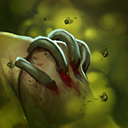 Rot
Rot (especially since
 Ghost Walk
Ghost Walk slows you down early on), so a good way to be sure you are safe is with
 Forge Spirit
Forge Spirits. Have them roam and scout, put them in the uphill, put them between you and a dangerous fog of war spot. Also if you really clutch you can dodge hooks and arrows by summoning
 Forge Spirit
Forge Spirits on the spot, this isnt as hard as it sounds, but its more likely to work once you have the double spirits.
 Clockwerk:
Clockwerk:
Similar to the
 Pudge
Pudge threat, but much more scary most of the times, going invis inside cogs isnt really escaping. Clock's range is much longer and can catch you far past your range of vision, etc; you get the idea.
The problem with
 Clockwerk
Clockwerk is that he remains a rock in your shoe during the whole game, even late game if he cogs you, you will die. If you combo him or his team and he has a
 Blade Mail
Blade Mail, you will die too. You have to watch out where he is all the time.
 Legion Commander:
Legion Commander:
Similar to
 Clockwerk
Clockwerk in a way, she will disable you and get you killed really easily, she also tends to buy
 Blade Mail
Blade Mail and bkb later on. Also she can purge off
 Cold Snap
Cold Snap with
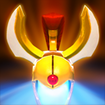 Press the Attack
Press the Attack.
 Bloodseeker:
Bloodseeker:
Another
 Blade Mail
Blade Mail carrier, this one is a tad special though.
 Invoker
Invoker isnt a tanky hero, sometimes if you get
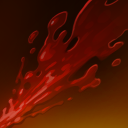 Rupture
Ruptured and he casts
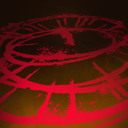 Blood Rite
Blood Rite, there will be no way you get out of it without dying, and once you get silenced you are in trouble. Also he can see through your
 Ghost Walk
Ghost Walk if you are low hp.
 Spirit Breaker:
Spirit Breaker:
Mainly because of how tanky he is, it becomes very difficult to kill with just spells. Stuns do a lot of harm to
 Invoker
Invoker, especially mid fight. And he is also a very dedicated mid lane ganker, so that's something you have to be looking at. He will also buy a blade mail some times.
You may notice the pattern here.
 Phantom Assassin:
Phantom Assassin:
Early to mid game she is really hard to kill because of [blur, once you get euls you can kill her with he combo. Once she comes down from euls she will try blinking away from the spells, so be sure there is no one around and that you are either far enough or in the way of meteor, so she cant use you as her escape. She will eventually get a bkb so keep your distance if you dont want to get killed in one hit.
 Tusk:
Tusk:
Mainly because of how ganky he is, and the burst he can deal to you can be pretty scary, and he scales well with farm so he is always a threat to keep in mind. Also, using
 Snowball
Snowball as an invulnerability spell can save tusk from an euls combo, same with
 Phantom Assassin
Phantom Assassin, you have to get into fog or go invis so he doesnt snowball you, also here you cant just put yourself in the spells' way like with PA, because
 Tusk
Tusk can target you here and not launch the
 Snowball
Snowball, dodging everything.
 Phantom Lancer:
Phantom Lancer:
Not knowing who to attack and having
 Sun Strike
Sun Strike damage divided is half the problems. Relentless mana burn and dodging your combos is the other half.
 Huskar:
Huskar:
 Huskar
Huskar doesnt give a **** about your spells, best way to deal with him is with
 Alacrity
Alacrity,
 Cold Snap
Cold Snap and forge spirits to reduce his armor.
 Sun Strike
Sun Strike's pure damage also comes in handy. And you can break his heal and also his satanic's active with
 Tornado
Tornado.
And if we talk items,
 Black King Bar
Black King Bar,
 Glimmer Cape
Glimmer Cape,
 Pipe of Insight
Pipe of Insight,
 Guardian Greaves
Guardian Greaves;
they will make your job harder. And any kind of bash, hex, overall disables will screw you over. Also be careful with any kind of track, not only
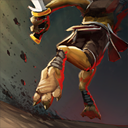 Track
Track itself but amplify damage too, and of course, watch your armor.
8. Good Stuff
On the other hand, we got stuff invoker is strong against, and there is a pretty solid collection of those; let's see:
Any hero that has no way of dodging and that isnt tanky, you will absolutely destroy. With combos and even in regular fights, they dont stand a chance against a well farmed invoker. Pretty much anything that fits that description is an easy kill, say,  Bloodseeker,
Bloodseeker,  Windranger,
Windranger,  Zeus; in your eyes these are all the same. You can combo kill them pretty easily as long as they dont tank up or get a bkb (or
Zeus; in your eyes these are all the same. You can combo kill them pretty easily as long as they dont tank up or get a bkb (or  Blade Mail in the case of
Blade Mail in the case of  Bloodseeker).
Bloodseeker).
Once you get euls focus on killing these heroes, they are the easy targets. No escapes, no invulnerability and no magic immunity.
 Invoker is also strong against heroes with low armor, with
Invoker is also strong against heroes with low armor, with  Forge Spirits you can easily put them in negative armor territory and destroy them with
Forge Spirits you can easily put them in negative armor territory and destroy them with  Alacrity autoattacks.
Alacrity autoattacks.
Heroes with lack of mobility are easy to catch in  Tornado combos and dropping an
Tornado combos and dropping an  Ice Wall in a fight can really hurt them when engaging and also escaping.
Ice Wall in a fight can really hurt them when engaging and also escaping.
 Wraith King,
Wraith King,  Medusa, and other mana dependent heroes get hard countered by a good
Medusa, and other mana dependent heroes get hard countered by a good  EMP, in this build your
EMP, in this build your  EMP isnt that good until later game, but you can always move around to put a couple more points in wex a bit earlier. See skillbuilds.
EMP isnt that good until later game, but you can always move around to put a couple more points in wex a bit earlier. See skillbuilds.
Once you take  Invoker's weak points into account and play around them, he is a hero that actually feels powerful, a bunch of spells to choose from and strong right clicks; he doesnt feel weak to play, like say, other mid heroes, like
Invoker's weak points into account and play around them, he is a hero that actually feels powerful, a bunch of spells to choose from and strong right clicks; he doesnt feel weak to play, like say, other mid heroes, like  Storm Spirit without mana.
Storm Spirit without mana.
There are also a good amount of synergies, mostly heroes that make invoker have an easy time, as he can do the rest by himself.
 Bloodseeker:
Bloodseeker:
In my opinion,
 Bloodseeker
Bloodseeker has a top tier synergy with invoker. First off,
 Thirst
Thirst vision means you get the easiest sun strikes of your life. Second, a
 Tornado
Tornado is all
 Bloodseeker
Bloodseeker needs to land
 Blood Rite
Blood Rite, you can do something like
 Tornado
Tornado  EMP
EMP bloodrite combo. And third,
 Bloodseeker
Bloodseeker can blood rage
 Invoker
Invoker before big combos, or even refresher combos, increasing all damage output. You can also
 Alacrity
Alacrity  Bloodseeker
Bloodseeker, etc.
Easy win.
 Clockwerk,
Clockwerk,  Nature's Prophet,
Nature's Prophet,  Legion Commander,
Legion Commander,  Pudge,
Pudge,  Shadow Shaman, etc.
Shadow Shaman, etc.
Strong disablers like these make for a really strong kill potential especially early on, because it allows you to get guaranteed sun strikes. This is not only good for invoke but goes towards having very scary side lanes, as the enemy considers your side has a pure high damage nuke that'll hit them if they get disabled.
 Clockwerk
Clockwerk and
 Nature's Prophet
Nature's Prophet use traps instead of disables, but it's the same deal.
 Shadow Demon
Shadow Demon counts too, but you have to time it.
 Dark Seer:
Dark Seer:
 Vacuum
Vacuum into
 Tornado
Tornado is insanely strong,
 Tornado
Tornado allows for wall placement and
 Deafening Blast
Deafening Blast forces enemies through it. Also
 Dark Seer
Dark Seer tends to purchase
 Shiva's Guard
Shiva's Guard, do it helps you combo too. Let
 Dark Seer
Dark Seer go first,
 Vacuum
Vacuum, then do your combo normally, have them put down he wall as early as possible, for best results.
 Jakiro:
Jakiro:
 Jakiro
Jakiro is an all around good hero to pair with
 Invoker
Invoker. First off, most of his skills have damage over time, which makes
 Cold Snap
Cold Snap really strong, also, his
 Ice Path
Ice Path and
 Macropyre
Macropyre both work in straight lines, which goes great with
 Tornado
Tornado,
 Chaos Meteor
Chaos Meteor and
 Deafening Blast
Deafening Blast. Also he tends to buy stuff like euls and
 Veil of Discord
Veil of Discord, with these you can do euls combo with some coordination, and add magic damage to the mix.
 Phoenix is also kind of decent with invoker due to the damage over time.
Phoenix is also kind of decent with invoker due to the damage over time.
 Ogre Magi:
Ogre Magi:
Extremely strong early game with
 Invoker
Invoker, especially on hard mid matchups. Sometimes
 Invoker
Invoker will struggle a bit against heroes like
 Lina
Lina for example, those lane dominators.
 Ogre Magi
Ogre Magi is a beast ganking mid, he has a handy stun, a slow which is also a DoT which procs
 Cold Snap
Cold Snap, movement speed and attack speed buff to pair with
 Alacrity
Alacrity; and on top of this, he is a damn meat shield with 7-8 armor and he can tower dive like a boss. A single gank from this guy(s) will even out your laning odds, and he remains handy in later fights too.
 Slardar:
Slardar:
I sort of like
 Slardar
Slardar on
 Invoker
Invoker's team, mainly because of the way he deals a lot of physical damage and helps allies deal it too. The aoe stun is the icing on the cake. With amplify damage you can see heroes and
 Sun Strike
Sun Strike in fog of war.
9. End Note
Anyway, that's all. It really took like twice the time I expected to, mainly due to real life stuff, but whatever. I was going to include a video like in my  Pudge's guide but there is way too many matches to go through and I wanted to release the guide already.
Pudge's guide but there is way too many matches to go through and I wanted to release the guide already.
If I see you go  Phase Boots and
Phase Boots and  Hand of Midas into
Hand of Midas into  Aghanim's Scepter rush, I will kick your *** on the spot.
Aghanim's Scepter rush, I will kick your *** on the spot.
From here it's just practice, get the spells and combo's down.
Get the feel of the hero, know your limits.
As always, comments are welcome. I'm sure there is some mistake I didn't see, considering how long this guide is.
 -Goo signs
-Goo signs
 Tango
Tango





































































Quick Comment (8) View Comments
You need to log in before commenting.